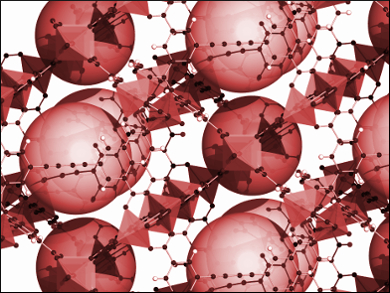Carbon dioxide in the atmosphere is both a problem in terms of man-made climate change and a possible carbon source for chemicals production. Therefore, ways to chemically fixate CO2 are of enormous interest. Heterogeneous catalysts, such as the porous metal-organic frameworks (MOFs) are especially promising due to easy workup and catalyst recycling.
Ruqiang Zou, Peking University, Beijing, China, Yanli Zhao, Nanyang Technological University, Singapore, and colleagues have developed a MOF which acts as an efficent catalyst for the conversion of CO2 into higher-value chemicals. The team used a solvothermal reaction to synthesize the framework, which consists of Cu(II) ions and a nitrogen-rich octcarboxylate ligand that incorporates four triazole groups. The product features catalytically active exposed Lewis-acidic metal sites, high porosity, and a high affinity to CO2 .
The researchers tested the MOF’s catalytic efficiency (together with a tetra-n-tertbutylammonium bromide cocatalyst) in the cycloaddition of CO2 and epoxides. Small epoxides are easily converted to cyclic carbonates, which have potential applications in the pharmaceutical and electrochemical industries. In contrast, the activity for the reaction of larger epoxides is substantially lower. This size selectivity leads to the conclusion that the reaction takes place within the MOF’s pores. According to the researchers, the framework could have potential for chemical carbon fixation.
- A Triazole-Containing Metal–Organic Framework as a Highly Effective and Substrate Size-Dependent Catalyst for CO2 Conversion,
Pei-Zhou Li, Xiao-Jun Wang, Jia Liu, Jie Sheng Lim, Ruqiang Zou, Yanli Zhao,
J. Am. Chem. Soc. 2016.
DOI: 10.1021/jacs.5b13335




